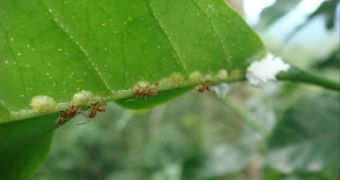The debate between proponents of organic farming and those of modern agriculture appears to have been settled in favor of the former, a 10-year-long study on the issue reveals.
For people doing it, organic farming represents the most vivid example of the balance of nature. They view the lands where crops grow as the ultimate example of how Mother Nature keeps things in check.
On the other hand, those who believe in the “principles” of modern agriculture look at croplands as if they are battlefields, in which diseases and pests need to be eradicated as fast as possible.
In other words, while some believe that nature regulates the crop environment and ecosystem itself, others believe that applying pesticides and herbicides is the way to go.
The new investigation, conducted by experts at the University of Michigan and the University of Toledo, shows that the view organic farmers have is the best for the crops.
Even if these people have oftentimes been criticized for being “unscientific” and naive for their belief in nature's balance, they appear to be correct in the end.
The main conclusion of the new study is that the “balance and harmony” view is on the mark. The investigation was led by UM ecologists John Vandermeer and Ivette Perfecto, and UT expert Stacy Philpott.
The research group explains that organic farms appear to promote the development of a highly-complex web of interactions, which involved both plant and animal species.
The end result is a self-balancing ecosystem, that is capable of defending itself against uncontrollable outbreaks of diseases and pests.
The team published the full details of its research in the July/August issue of the esteemed scientific journal BioScience.
The work also reveals that not all species in the system influence each other directly, but that some tend to take more indirect paths in doing so. That doesn't mean the effect is any less obvious.
“Our view is that interaction webs of this sort will prove common in agro-ecosystems in general,” explains Perfecto, who holds an appointment as a professor of ecology and natural resources.
“Although widely appreciated in natural systems, such webs haven't been seen in agro-ecosystems because the people studying them haven't looked at them in this way,” he adds.
“They're looking for magic-bullet solutions; they want to find the thing that causes the problem and then fix it. Our approach is to understand systems that are working well, where there are no problems. By doing that, we can define systems that are more resilient and resistant to pest outbreaks,” Perfecto concludes.

 14 DAY TRIAL //
14 DAY TRIAL //